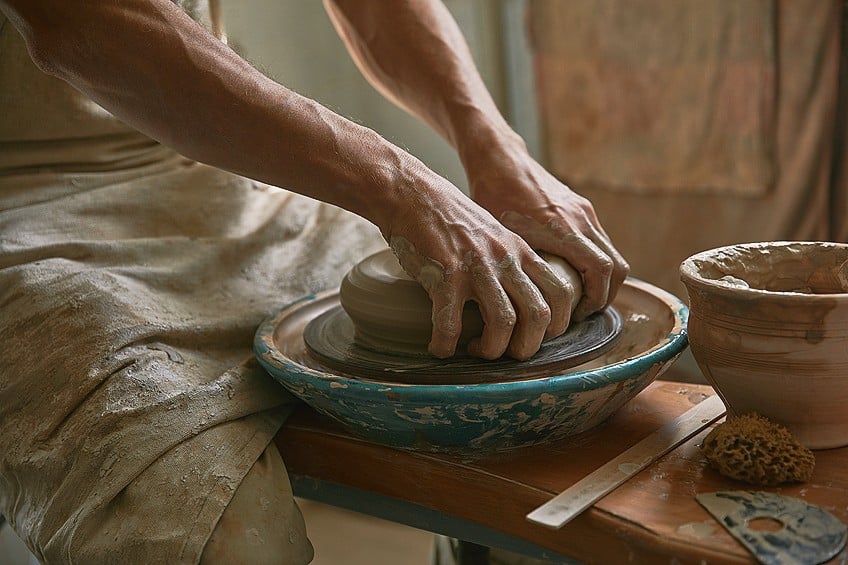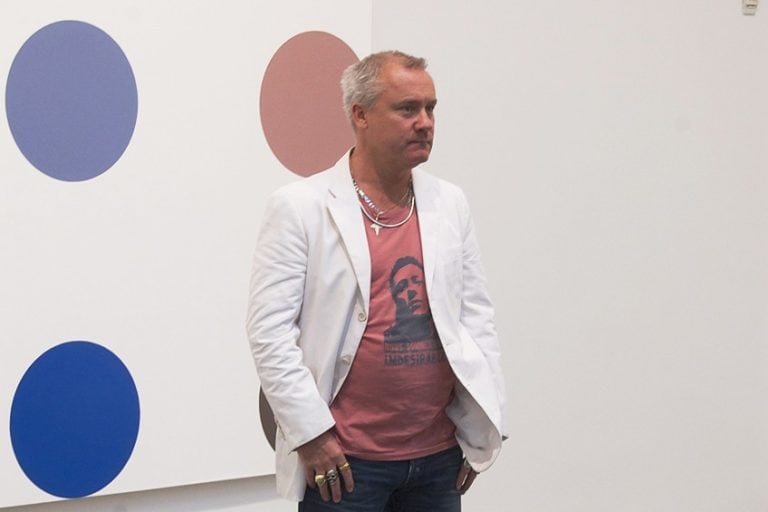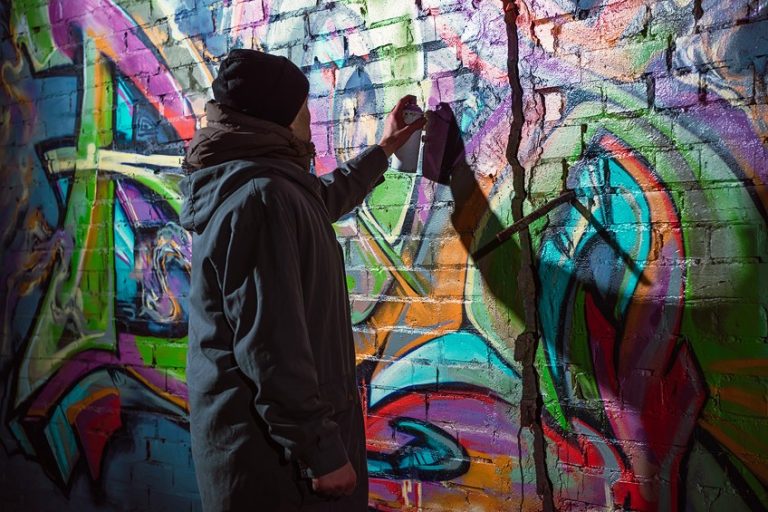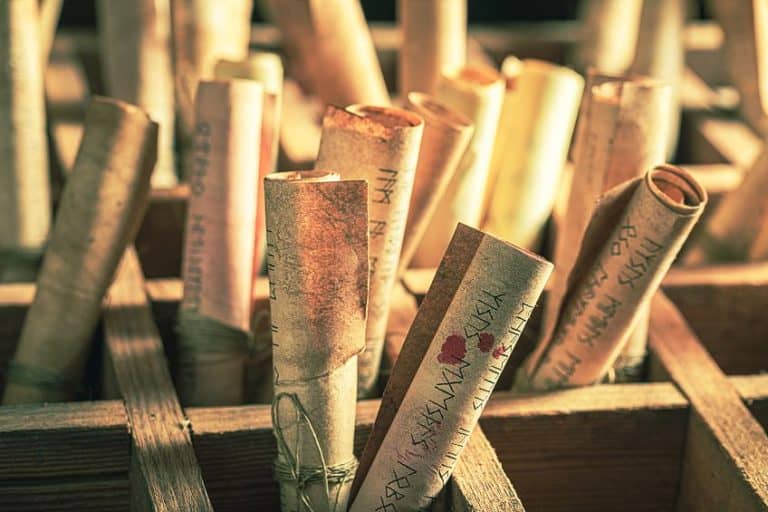What Is Pottery? – Learn About the History of Pottery
Pottery has been a part of most cultures for millennia. Historical pottery has been uncovered and dates back to before Ancient civilizations, and it has changed and evolved into what it is today. Pottery is a little more complex than you might think, so to simplify things, we are going to be discussing a few relevant topics from the history of pottery to pottery types, and how you go about making pottery. Read on to learn all about this fascinating subject!
What Is Pottery?
A basic definition of pottery is that it is a process of using clay and other raw materials to shape and form vessels or objects. These are then fired at high temperatures, which helps to harden them and make them more durable. The person who does this is known as a potter, and the place this process is performed is known as pottery. It is one of the oldest forms of decorative art, which has gained popularity around the world.
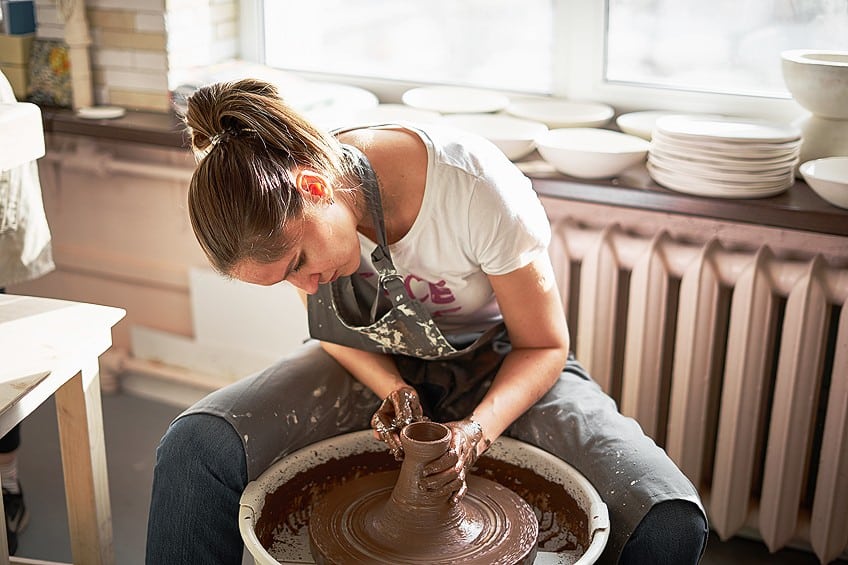
Clay items consist of both functional vessels, such as plates and bowls as well as decorative pieces, which are often given a color glaze. Many of the clay items are also decorated with designs or carvings. The items require high heat, which is done either through a fire pit or a kiln. Both processes lead to a change in the rigidity and strength of the clay materials. Other examples of pottery include the following:
- Tableware
- Decorative items
- Sanitaryware (for example, toilets)
- Technological and industrial applications
In the case of industries, certain applications include electrical insulators and laboratory items. Before all the industrial applications, people from ancient civilizations used pottery for vessels only. Even though made from similar materials, sculptures are referred to as terracotta’s.
Brief History of Pottery
During archeological excavations, historical pottery is usually a common item found, as it is so durable and abundant in many cultures. Each pottery piece has the potential to provide valuable information about the area, society, and culture it was obtained from.
Pottery is believed to be the oldest human innovation and is said to date back to the Neolithic period.
Where Does Pottery Come From?
Who invented pottery or where was pottery invented? You cannot pin down an individual place or person for the invention of pottery, as it developed independently from different parts of the world at different times. Artifacts and pottery items have been unearthed in many parts of the world that date back thousands of years. Pottery items have been found in China, Japan, And all over the Asian continent, South America, Sub-Saharan Africa, and the Middle East. Pottery also found its way to Europe and the United Kingdom. Historical pottery can be categorized into two groups, one being the “fine” pottery, which is more aesthetically appealing and is well-made and expensive. The other is “folk” or “course” pottery that is found in most villages and is undecorated and not as well-made.
Earlier pottery items were likely created by a hand-shaping technique like coiling. These pottery items were unglazed, uneven in form, and were most probably fired in a pit or on an open fire.
Many of these pottery items most probably began as storage vessels for water and food, and as time progressed, the functional aspect remained but more artistic techniques and uses developed. The potter’s wheel is believed to have been invented between 6.000 and 4.000 BC by the Mesopotamians, which transformed how pottery was produced.
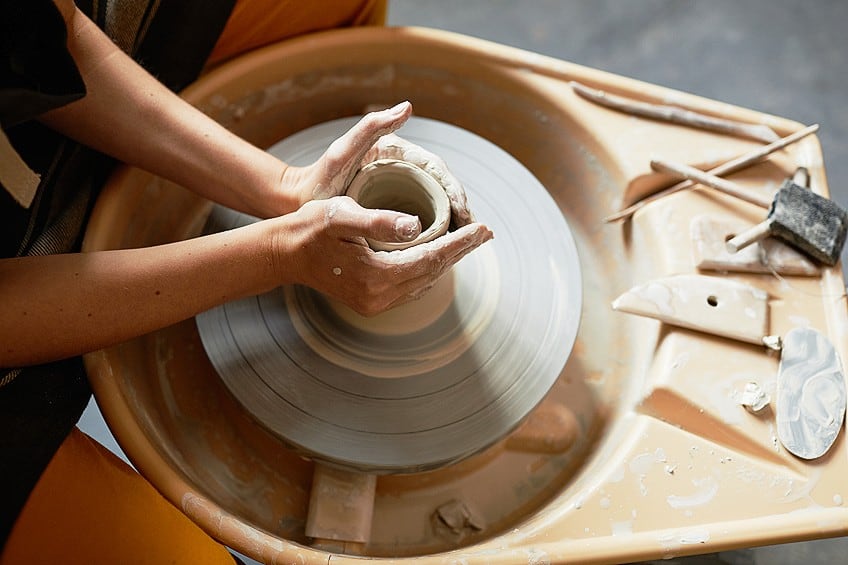
It was also found that molds were also used as early as the fifth and sixth centuries. Slip casting has also been proven to be in use during the Tang Dynasty (618 – 907 A.D) in China. This is a way to shape irregularly shaped clay items that can also be mass-produced by filling molds with slip. Slip is a blend of dry clay with water.
Archeologists have gained great insight into various cultures, just by observing and studying pottery. Since it is such a durable material, pottery is one of the more common materials found at dig sites.
Pottery and the Industrial Revolution
Ever since the Industrial Revolution (1760 – 1840), pottery has transformed from being a village craft to being mass-produced in factories. For example, before the revolution, people mostly used wood or pewter, but mass-produced ceramic dinner plates became more popular. During this transition, much of the skill and knowledge of old craftsmen were lost.
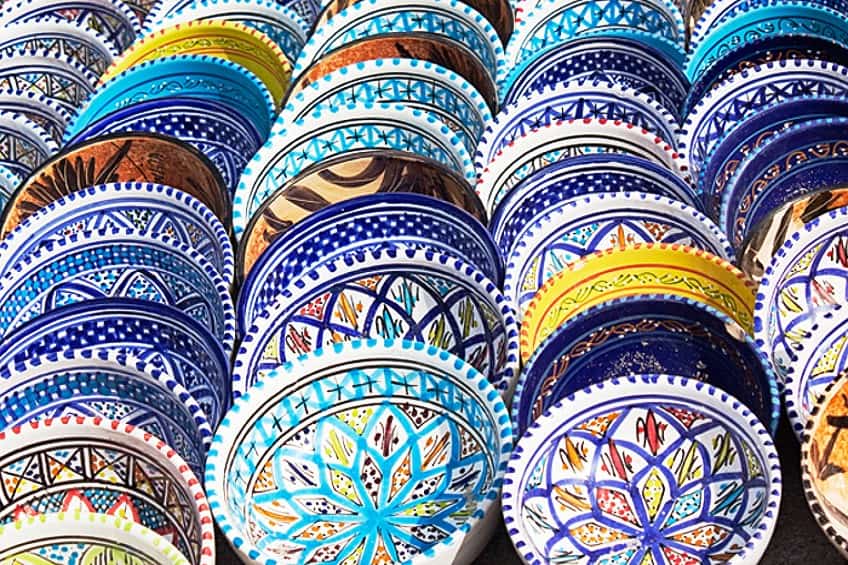
The bisque firing also came from this time before pottery went through a single firing process. Single firing takes time and requires skill to produce a pottery item. This might have been okay for a village potter but is not the best technique to create large quantities of duplicated pots. Bisque firing involves a first firing, which transforms the clay. The clay is still porous and will absorb the glaze. The pottery item is then fired a second time, which sets the clay and glaze further. The process helps form a more uniform item.
Pottery in the Modern World
By the twentieth century, most traditional pottery craftsmen were only found in a few villages, mainly in Japan, China, and other Third World countries. It has been brought back to places like London and the United States with the help of people like Bernard Leach (1887 – 1979), a British potter who spent time in Japan learning from a Japanese master potter. He opened up a pottery shop in England, which is known today as Leach Pottery. He also visited the United States and taught classes, which influenced up-and-coming American artists like Warren MacKenzie (1924 – 2018), reviving the traditional craft of making pottery.
Today, you can get electric or gas kilns and the diversity of what you can do with pottery is diverse, ranging from heavy stoneware to delicate porcelain items.
Materials and Tools for Making Pottery
There are various pottery types available, which we will be discussing further down in the article. However, the general materials and tools you will need are included in the following list.
- Clay
- Kiln
- Pottery wheel
- Modeling tools
- Glazes and paints
These are the basic materials you will need, and you can always upgrade as you get more experienced. The type of kiln you purchase will depend on various factors, such as what clay you will be working with or the type of glaze you will be using, as well as the size and quantity you will be making. An electric kiln is quite popular as it can adjust the temperature requirements if you need to.
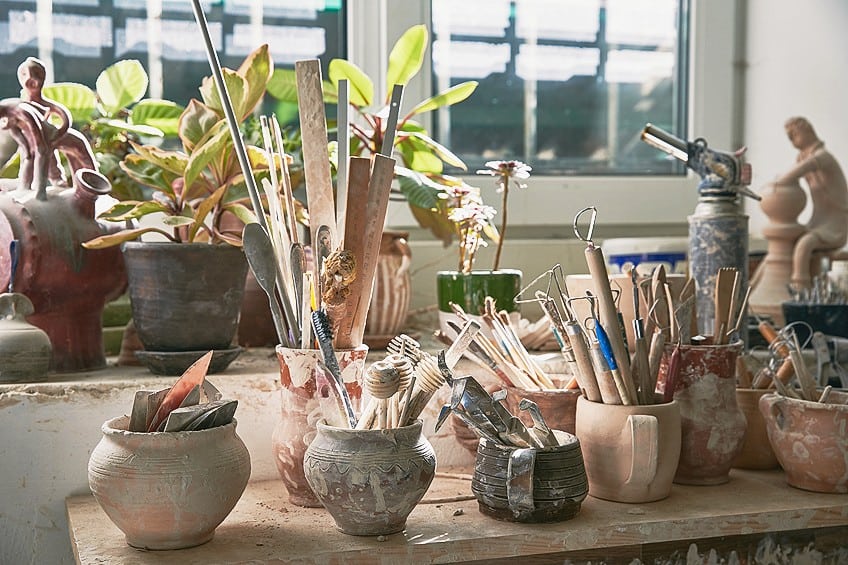
Potters all have their own techniques they use and depend on the idea and purpose of the potter. If you are only starting and simply want to hand-shape the clay, then you do not need a potter’s wheel. However, this can produce uneven clay shapes, so if you want to be more consistent and produce more, then you should invest in a potter’s wheel.
Clay Tools
There are quite a few different tools you can use with clay, which all produce different effects. You can get away with only the first three items on the materials list, but if you want to be more creative, then adding some of the following tools can help.
- Needle tools: These are used for carving, piercing, trimming, and measuring thickness.
- Ribbon tools: When you are shaping clay by hand, you can use ribbon tools for carving and trimming.
- Cutter wires: These are perfect for cutting large blocks of clay easily.
- Brushes: These can help you to apply the glaze and clay slip and other purposes.
- Clay scrapers: The scrapers can be used to smooth out the clay surface, and are used for sculpting.
- Sponges: Use sponges for cleaning and shaping the clay surface.
- Towels: Working with clay can become messy, so having a few towels around, and wearing an apron can help.
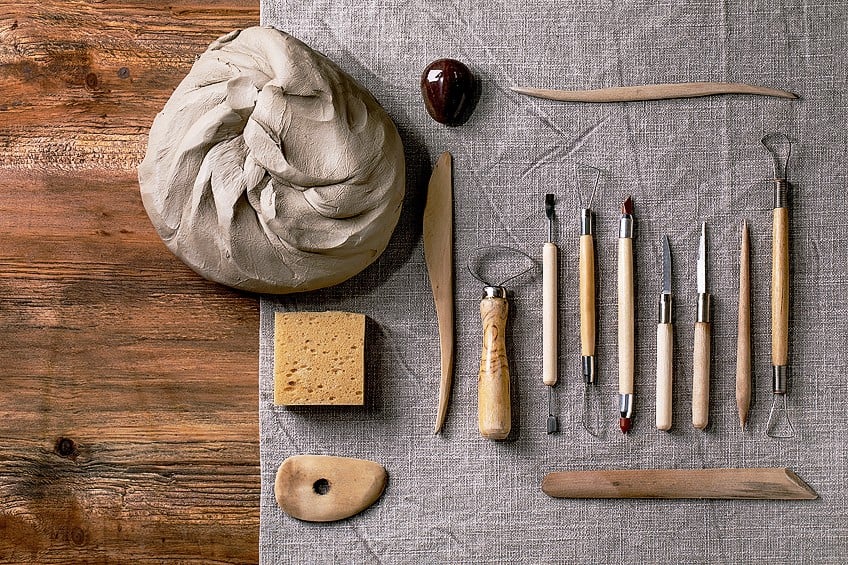
Glazes and Paints
The most common way of decorating clay items is by applying glazes and paints. There are other more challenging techniques, such as transfer painting or carving, but you can always learn these techniques after you have mastered the basics. Glazing is very easy to do and is a liquid that is available in many different colors you can apply to the clay. It will produce a smooth and glossy surface once it has been fired. The glaze also helps to waterproof clay pieces.
The paints used on clay can include liquid latex or acrylic paints. Both glazes and paints are readily available and affordable.
Pottery and Ceramics
Are ceramics and pottery the same? Many use these terms interchangeably, and in many ways they are similar. The term “ceramics” comes from the Greek language and means “for or of pottery”. Both follow the same process of taking clay objects, shaping, and decorating them, and then hardening them at high temperatures. Clay is itself a natural substance that is malleable and will harden when super-heated. You can say that pottery is a form of ceramics and mainly focuses on the creation of a functional vessel, such as a bowl or mug.

A ceramic piece focuses more on the artistic side of the clay, such as clay sculptures. Ceramics also have broader applications, for example, industrial ceramics can include a variety of materials, such as silica carbide that improve strength and durability. As mentioned, many use either term, but others again distinguish between the two. You will also find that modern pottery is divided into two categories, which include commercial pottery and studio pottery. One is mass produced, while the other is done by an individual potter or ceramicist.
Pottery Types
Now that we have covered the basic materials and tools needed for pottery, let us take a closer look at the different pottery types available. There are three main categories for clay, including earthenware, stoneware, and porcelain.
All of these pottery types can be unglazed or glazed and can also be decorated using different techniques.
Earthenware
This is the most common type of clay or pottery and is often what is used for things like roof tiles and bricks. The name comes from its earthy type of color and the origins of the clay. Once fired, the unglazed clay remains semi-soft and can be scratched or even broken. The clay also becomes porous, so liquids will be absorbed. The clay can then be glazed and fired again. The earthenware clay matures around 1700 and 2075 degrees Fahrenheit (927-1135 degrees Celsius). The clay itself contains quartz, which is a crystalline type of mineral as well as feldspar, which you can find in most rocks. It also contains iron oxide, and this is what gives the earthenware its distinctive reddish-brown color.
The wet clay also comes in a range of colors from brown, red, and orange to gray. Once fired, the clay can also be similar colors as well as white.
The clay can also contain many impurities, which it collects throughout the whole process. The clay is easy to manipulate and is also easier to fire than stoneware. There are a variety of types of glaze and glaze colors that can be applied. The glaze remains on the surface of the clay and does not mix with the clay.

In the early years, this pottery type was usually fired at low temperatures in an open fire or fire pit. The clay was hand formed and decorated, and often only had a single firing. Since the clay remained porous, it was not much use for storing liquids, or as certain tableware items. The reddish-brown clay is popularly referred to as terracotta in its unglazed state, or when it is used for sculpting.
The use of ceramic glaze helped make the pottery more impermeable, which made the pottery items more useful and practical.
Stoneware
This pottery type is fired at higher temperatures 2192 degrees Fahrenheit (1200 degrees Celsius). The process is known as vitrification, where the item becomes non-porous and similar to a glass surface. There is a range of types of stoneware clay, the most common being traditional and fine stoneware. When the glaze is applied, during firing, it mixes with the clay. Stoneware is often gray when moist, and when it has been fired, it can show colors from light to medium gray, and brown.
The Chinese are credited for developing stoneware, it is grouped together with porcelain that is fired at higher temperatures. Stoneware came to the European region during the Middle Ages, as proper clay was less abundant, and the kilns were not as effective. Stoneware became a specialty with German potters, until the Renaissance period.

Stoneware can be further categorized as a midrange or high-fire stoneware. The midrange stoneware is also known as “ovenware” as it is often used to visually determine the oven temperature in a kiln by using a few clay cones that melt at specific temperatures. This type of stoneware is easier to achieve at home in an electric kiln. The high-fire stoneware is non-porous and extremely durable due to the high temperatures used, which can be 2300-2400 degrees Fahrenheit (1260-1315 degrees Celsius). This stoneware is often used for functional pottery, but the process is usually expensive and time-consuming. Due to the higher temperatures, kilns tend to wear out faster.
Stoneware is quite durable and is most commonly used in cookware for cooking and baking, as it can evenly distribute heat during the cooking process. It is also used for storage containers, or as vases and serving dishes.
Porcelain
Porcelain was also something that was developed first in China, during what is known as the Tang Dynasty (618-907). When suitable amounts of kaolin clay were found in Japan and Korea by the late 16th century, porcelain was also made in these areas. Only after about the 18th century was porcelain made outside East Asia. The process involves heating materials that include kaolin at temperatures ranging from 2200-2600 degrees Fahrenheit (1200-1400 degrees Celsius). This is higher than for your other pottery types.
The strength, durability, white color, and translucent look of porcelain are achieved through a vitrification process, where the mineral mullite is formed at high temperatures. Porcelain is used in a wide application range from delicate tableware to being used as dental crowns or for electrical insulation.
The Basics of How to Make Pottery
Creating pottery is a fun, creative and fun activity that can help to relieve stress and maybe even make some extra cash out of it. How to make pottery? There are a few steps you need to follow, and we will be dealing with a basic overview of what you need to do when making pottery.
Choosing the Type of Clay
We have already dealt with the different pottery types. So, depending on the purpose, you will need to choose a suitable clay. The most common clay is the earthenware option. Potter’s clay is usually readily available from a local ceramic store or even online at Amazon.
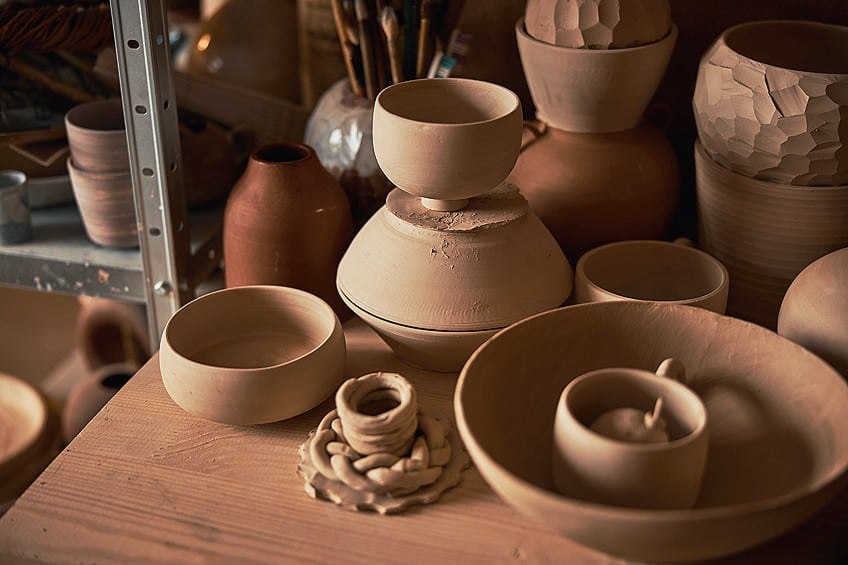
Preparing the Clay
This is also known as wedging clay when done manually and is a process of kneading the clay to eliminate air bubbles, which also helps make the clay easier to work with. The process also gives the clay a more even consistency and maintains even moisture levels.
You can also achieve this process by working with a machine known as a vacuum pug.
Shaping the Clay
The most simple way of shaping clay is through using various hand-building techniques. The two more common methods are coiling and pinching. Another popular technique is called throwing, which uses a potter’s wheel. Other more technical techniques use molds and machines, for example, slip casting, mold casting, and RAM pressing. Let us look at the more basic shaping techniques.
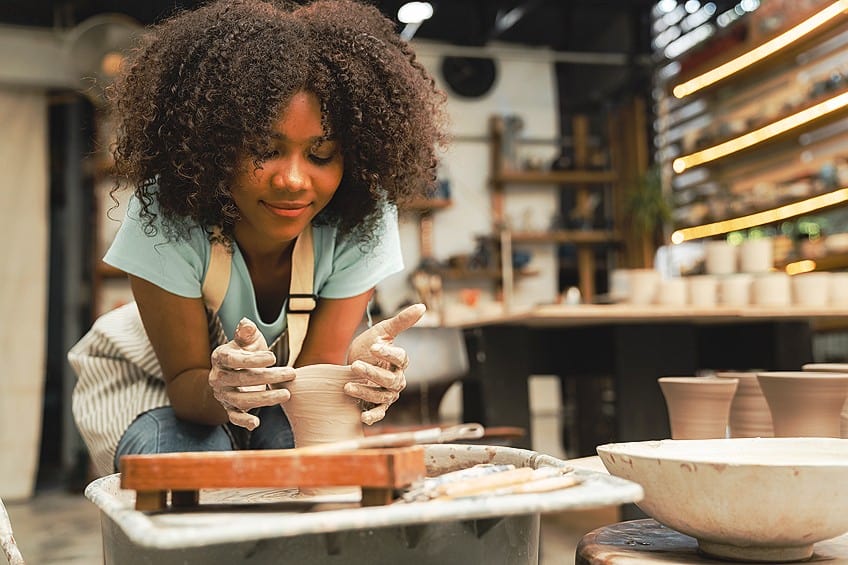
Coiling Technique
This is a technique that has been used since the beginning and uses coils of clay that are layered on top of each other. The coils are added until the form of the bowl or container can be distinguished. You can create a larger base, which becomes narrower, or begin with a narrow base and widen the clay. When working with clay, the walls remain intact and will not collapse, which makes it quite a versatile technique. The clay needs to be moist, soft, and pliable to work. The coils are attached by scoring and slipping to create a nice seal. Scoring simply means marking the area with a needle tool. Slip is a little bit of dry clay that is mixed with water, which can be applied by using a brush.
This is an ideal technique for beginners and does not require many tools to complete. However, the coils must be sealed properly if you want the item to hold liquid.
Pinching Technique
Another simple technique is the pinch pot technique. All you need to do is take a ball of clay and shape it by pinching the clay. This does limit you in that the size of an item will be smaller. The technique does allow more control, and there are no tools needed, which makes it ideal for beginners. You will develop an awareness of the clay and how it feels. However, you can mistakenly make the walls a bit too thin, which can render the item useless. Once you master this technique, you can advance to wheel throwing.
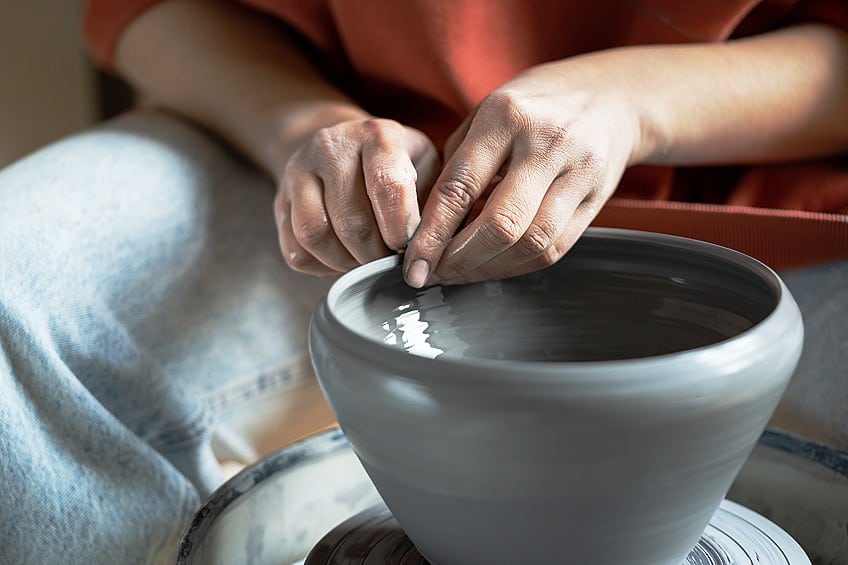
Throwing Technique
This is where the pottery wheel comes into play, which helps you to shape the clay. As a beginner, you can also start with the wheel, but it is a bit more challenging than the previous techniques. You need to make sure that the clay is perfectly centered on the wheel, and the walls need to be created so they do not collapse. This can take time to learn and perfect.
For this technique, you will need the pottery wheel and a few other tools. These can include various tools like a wire clay cutter, sponges, a needle tool, a modeling tool, and a metal scraper among others. You can purchase tool sets for this purpose.
This technique goes much faster than the previous techniques, and the clay item comes off the wheel looking better than the hand-building methods. This technique does cost more and does take time to master. If you do mess up, you can simply use another clay piece or the same clay to start over. The pot you are making should have a uniform thickness, which can be about a quarter of an inch thick. If not, the pot can crack if it is uneven and too thin.
Drying the Clay
Before firing, any moisture in the clay must be removed. There are a few different stages and identifying names to this process. You have what is known as greenware, which is unfired items that are still malleable. The next stage is known as leather-hard, which means it has dried partially and has a leather-type feel. Items at this stage are firm, but slightly pliable and can be trimmed, sculpted, or carved, or you can add handles, depending on what you are making. You can also add underglaze.

The third stage is known as bone-dry, where there is very little to no moisture present. When this stage is reached, the pottery item can be fired. The item is quite fragile at this point and should be treated carefully. Also, if the item is not dry and it is fired, it could crack or even explode in the kiln. Moisture can also affect electrical kilns, and you will have to replace the kiln often. It could take up to a week or more to dry properly, as it depends on the climate you live in.
Firing the Clay
Firing starts a process that changes the body of the clay. Some of these changes include sintering, which is the fusing of coarse particles, which can also mean something along the lines of forming a solid mass. The reason for the firing is to permanently harden the pottery item. The most common method used for this process is a kiln, which today, can be electrical or gas operated.
Other methods are available, such as using the traditional fire pit, where wood or coal is used. There are also different stages to firing, which include Bisque and glazed fired.
Bisque Fired
This is the first firing stage after the clay has been shaped and becomes bone-dry. The result is both chemical and physical changes in the clay. The pottery item is usually heated slowly and must cool slowly and can take up to 10 hours or more depending on the size and type of kiln. The purpose of bisque firing is to make the clay harder, stronger, and more porous. This makes the glazes and stains bond to the surface well. The bisque firing also removes any residual moisture and will burn off any organic matter.

Glaze Fired
This is the final stage and is applied to bisque ware that has been glazed. Underglazes and stains have also been applied before this stage. The heat causes the glaze to bond to the pottery surface. The process also enhances the physical and chemical changes of the clay.
Taking into account packing the kiln, heating it, and cooling it down, it can take up to three days for the firing process.
Glazing the Pottery
This is done before the final firing process and after bisque firing. At this stage, you can apply an underglaze or glaze. Underglaze is a color or design that is applied before adding the glaze. There are a few ways you can apply the glaze, from using a brush to spraying it on, dipping the pottery item into it, or pouring the glaze over. The three main types of glaze include satin, matte, and gloss. There are also other methods of decorating clay, such as burnishing or applying a transfer print known as lithography, amongst others.
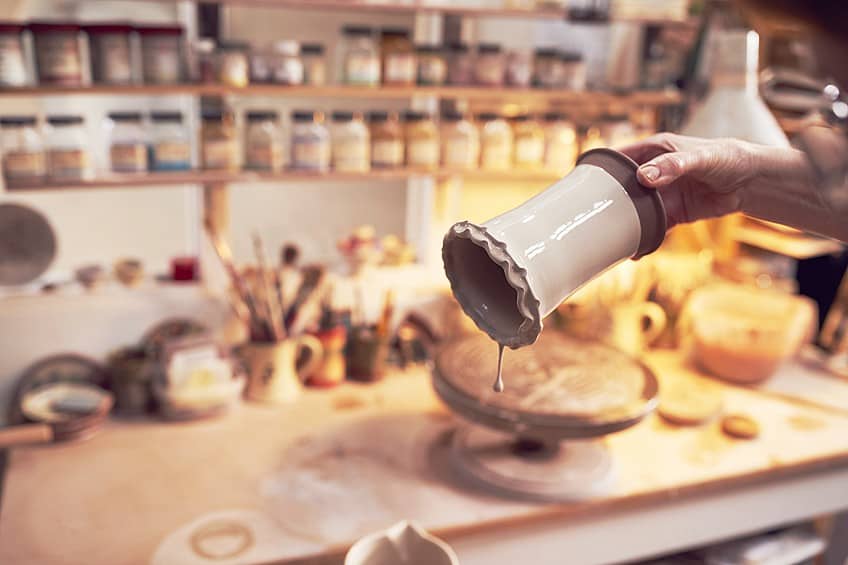
Uses of Pottery
The original purpose of pottery was as storage vessels or bowls and plates. However, other uses have also been recorded. For example, fishermen used clay weights on their fishing nets. Ancient Egyptians used pottery as household wares, but there were also pottery items that were used for ritual or ceremonial purposes and are often found in burial grounds or tombs.
The Greeks made pottery into an art form, and back in those days, the potters were considered craftsmen. Again, many of the items were made for storing things like olive oil and wine.
The vessels were beautifully decorated with images from Greek mythology. In Africa, pottery is also used for similar purposes, but also for other religious or magical purposes. Some pots were even used as musical instruments in parts of Nigeria. These are only a limited number of examples of the use of pottery in the past. Today, pottery is still used for practical purposes, but it has also become a decorative art. Different types of pottery or clay are also used in the construction business, for example, floor tiles and bricks.
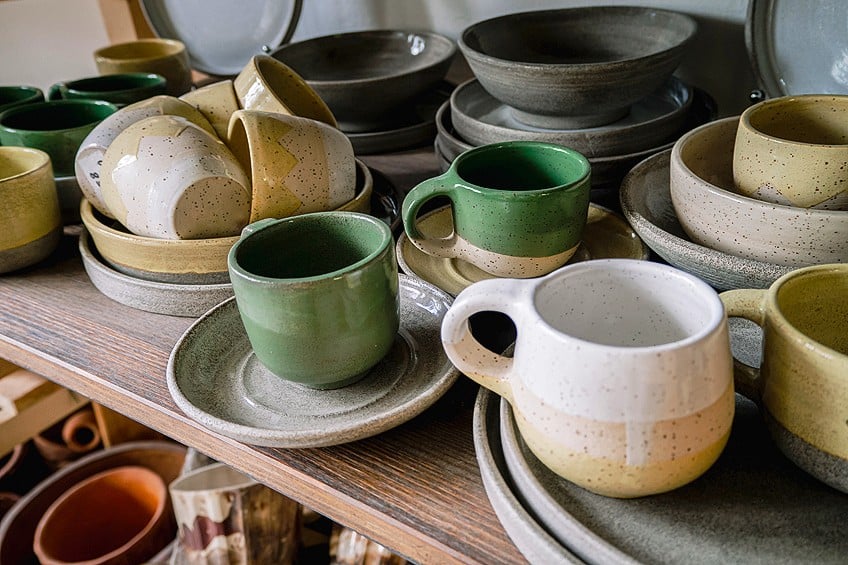
Depending on the pottery type, various modern items are made from clay. There are diverse ceramic applications including being used in spark plugs, artificial joints, or fiber optics. Below is a short list of other uses as there are many other places where pottery can be used.
- Pizza ovens
- Electrical insulators
- Perfume bottles
- Musical instruments
- Flower pots
- Lamps
- Jewelry
- Toys
- Cooking pots
- Dentures and crowns
- Decorative items
- Art pieces
Making pottery is something that can be done by anybody, both young and old. There are also easy techniques you can use that require little to no tools to begin with. You can also challenge yourself with more advanced pottery techniques, so there is something for everyone when it comes to creating amazing pottery pieces!
Take a look at our pottery webstory here!
Frequently Asked Questions
What Is Pottery?
Pottery can be described as the process of taking clay, whatever pottery clay type, and shaping it to form an object. This object is then decorated and fired to form a hardened and more durable pottery item.
Who Invented Pottery?
Where was pottery invented and who invented it cannot be pinpointed to an exact time, person, or place. Pottery developed in various countries at different times. Many of the techniques came from China, but many countries also developed their own forms of pottery that have all contributed to what we know of pottery today.
What Are the Three Main Pottery Types?
There are many different forms of clay, but there are three main pottery types you can choose from. These include the more common earthenware, durable stoneware, and beautiful porcelain.
In 2005, Charlene completed her Wellness Diplomas in Therapeutic Aromatherapy and Reflexology from the International School of Reflexology and Meridian Therapy. She worked for a company offering corporate wellness programs for a couple of years, before opening up her own therapy practice. It was in 2015 that a friend, who was a digital marketer, asked her to join her company as a content creator, and this is where she found her excitement for writing.
Since joining the content writing world, she has gained a lot of experience over the years writing on a diverse selection of topics, from beauty, health, wellness, travel, and more. Due to various circumstances, she had to close her therapy practice and is now a full-time freelance writer. Being a creative person, she could not pass up the opportunity to contribute to the Art in Context team, where is was in her element, writing about a variety of art and craft topics. Contributing articles for over three years now, her knowledge in this area has grown, and she has gotten to explore her creativity and improve her research and writing skills.
Charlene Lewis has been working for artincontext.org since the relaunch in 2020. She is an experienced writer and mainly focuses on the topics of color theory, painting and drawing.
Learn more about Charlene Lewis and the Art in Context Team.
Cite this Article
Charlene, Lewis, “What Is Pottery? – Learn About the History of Pottery.” Art in Context. May 24, 2023. URL: https://artincontext.org/what-is-pottery/
Lewis, C. (2023, 24 May). What Is Pottery? – Learn About the History of Pottery. Art in Context. https://artincontext.org/what-is-pottery/
Lewis, Charlene. “What Is Pottery? – Learn About the History of Pottery.” Art in Context, May 24, 2023. https://artincontext.org/what-is-pottery/.


